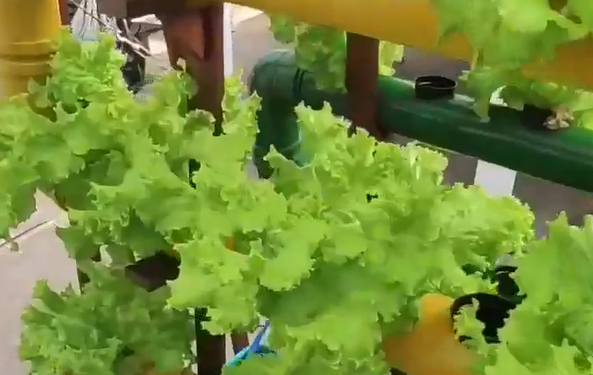Entrepreneurs and investors seeking sustainable agricultural opportunities are turning their attention to innovative methods like hydroponics. However, what if there was a way to achieve similar results without the hefty price tag? Dive into the world of hydroponics without hydroponics, where recycled materials and space-saving techniques are revolutionizing food production.
Article:
In the quest for sustainable agricultural practices, the mantra of “reduce, reuse, recycle” has never been more pertinent. Enterprising minds are constantly seeking innovative ways to repurpose materials and maximize resources, and one such avenue of exploration is hydroponics without hydroponics.
Traditional hydroponic systems often require substantial investment in infrastructure and equipment, posing a barrier to entry for many aspiring agricultural entrepreneurs. However, recent developments have showcased alternative approaches that leverage recycled materials and space-saving techniques to achieve similar results at a fraction of the cost.
Imagine transforming ordinary pipes, typically destined for landfills, into the backbone of a thriving kitchen garden. With a bit of creativity and ingenuity, these seemingly mundane objects can be repurposed to support hydroponic-like growing systems. By circulating nutrient-rich water through the pipes, plants receive the essential nourishment they need to flourish, all without the need for soil.
The beauty of hydroponics without hydroponics lies in its accessibility and affordability. By harnessing recycled materials and maximizing space efficiency, entrepreneurs can cultivate crops in even the most confined settings. Whether it’s a rooftop garden in the heart of a bustling city or a compact backyard greenhouse, the possibilities are endless.
Beyond the environmental benefits of repurposing materials and reducing waste, hydroponics without hydroponics offers tangible economic advantages. By minimizing upfront costs associated with traditional hydroponic setups, entrepreneurs can allocate resources more efficiently, ultimately enhancing return on investment.
Furthermore, the scalability of this approach opens doors to addressing broader societal challenges such as food insecurity and malnutrition. By harnessing the power of recycled materials and space-saving techniques, entrepreneurs can grow fresh produce in areas where arable land is scarce, thereby empowering communities to combat hunger and improve nutritional outcomes.
As we strive towards a more sustainable future, the adoption of innovative agricultural practices is paramount. By embracing concepts like hydroponics without hydroponics, entrepreneurs can cultivate not only crops but also resilience and prosperity within their communities.










